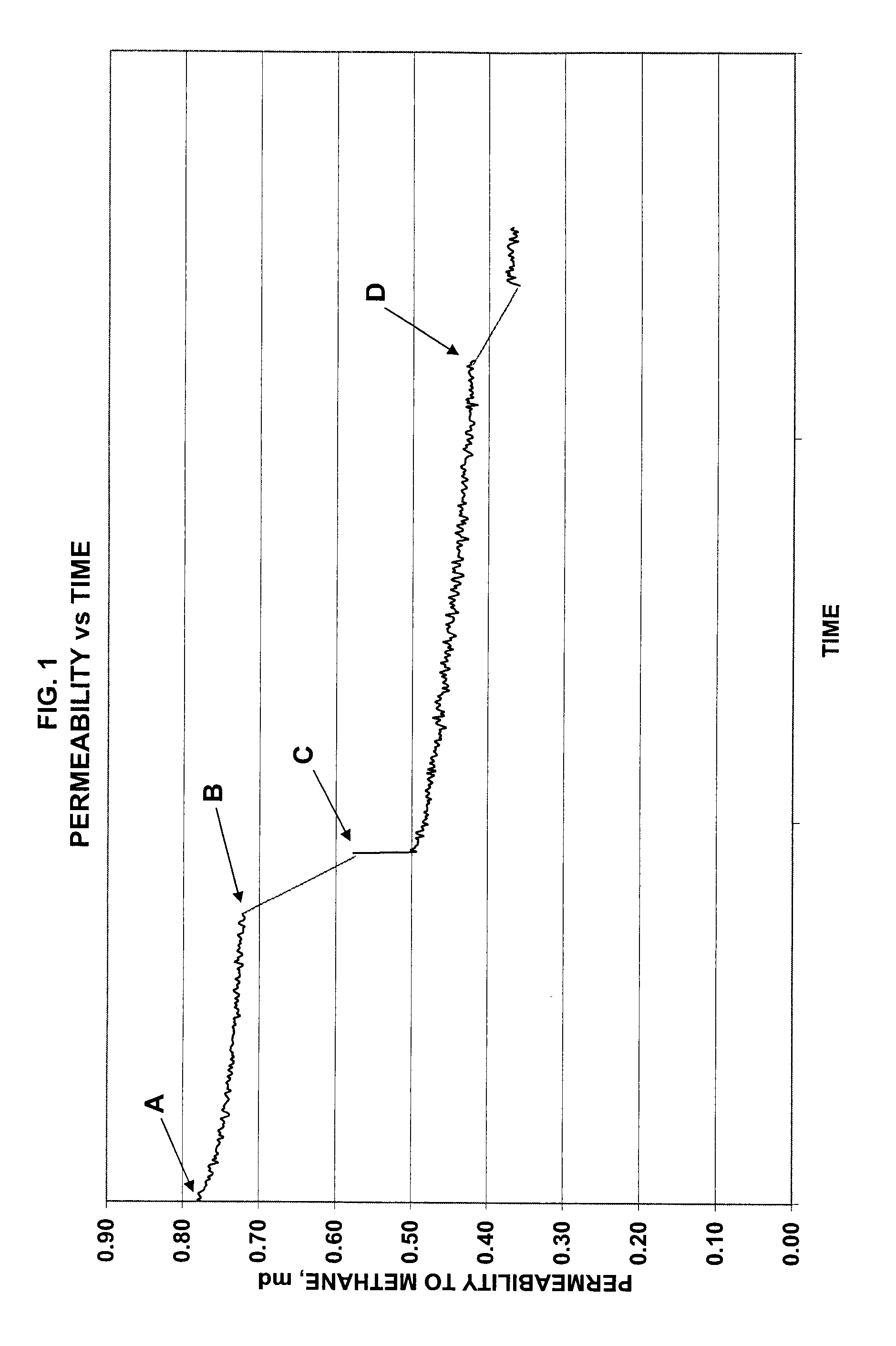Self-sealing well cement composition
a well cement and composition technology, applied in the direction of sealing/packing, wellbore/well accessories, chemistry apparatus and processes, etc., can solve the problems of reducing the production of wells, high temperature, high pressure, failure and collapse of cement, etc., to minimize or mitigate the unwanted migration of water or hydrocarbons
- Summary
- Abstract
- Description
- Claims
- Application Information
AI Technical Summary
Benefits of technology
Problems solved by technology
Method used
Image
Examples
example 1
Preparation of Fractured Cement Samples
[0041] Joppa H cement is commercially available from Lafarge's Joppa Illinois plant. Cements are commonly referred to by an API specification class. The class is assigned based upon, among other characteristics, the percentage of water in the cement. Class A has 46%, B has 46%, C has 56%, G has 44%, and H has 38%. In the examples presented herein, Joppa Class H cement is used. Cement samples were prepared in accordance with API Recommended Practice 10B, 22nd edition, December 1997.
[0042] LANXESS BAYMOD® N VP KA 8641 was added to Joppa Class H cement so that the percentage of additive was 15% (i.e. 15 pounds additive per 94 pounds of cement). The samples were cured at 140° F. and 3000 psi in core molds (1″ diameter×2″ length) for 72 hours. The samples were released from the molds and fractured prior to testing. Fracturing was accomplished by a chisel impact along a scored edge. The fractured molds were re-connected and wrapped with Teflon and ...
example 2
Permeability Testing of Fractured Samples
[0044] Testing was performed on the mechanically fractured cement samples. Flow testing was performed at ambient temperature with commercial grade methane gas (93% methane). Confining stress and injection pressure were varied to keep the effluent gas rate at less than 60 cm3 / min. Differential pressure was monitored over time.
[0045] Permeability is a measure of the ability of a material, in this case the fractured cement samples) to transmit a fluid. With the differential pressure measured for the cement sample tests, permeability was calculated using Darcy's Law. Darcy's law is a simple proportional relationship between the instantaneous discharge rate through a porous medium, the viscosity of the fluid, and the pressure drop over a given distance: Q=-κ Aμ(Pb-Pa)L
where Q=the total discharge (units of volume per time, e.g., cm3 / min); κ=the permeability of the fractured cement sample (measured in mD or milliDarcy); A=the cross-sectional ...
PUM
| Property | Measurement | Unit |
|---|---|---|
| Percent by mass | aaaaa | aaaaa |
| Percent by mass | aaaaa | aaaaa |
| Percent by mass | aaaaa | aaaaa |
Abstract
Description
Claims
Application Information
 Login to View More
Login to View More - Generate Ideas
- Intellectual Property
- Life Sciences
- Materials
- Tech Scout
- Unparalleled Data Quality
- Higher Quality Content
- 60% Fewer Hallucinations
Browse by: Latest US Patents, China's latest patents, Technical Efficacy Thesaurus, Application Domain, Technology Topic, Popular Technical Reports.
© 2025 PatSnap. All rights reserved.Legal|Privacy policy|Modern Slavery Act Transparency Statement|Sitemap|About US| Contact US: help@patsnap.com


